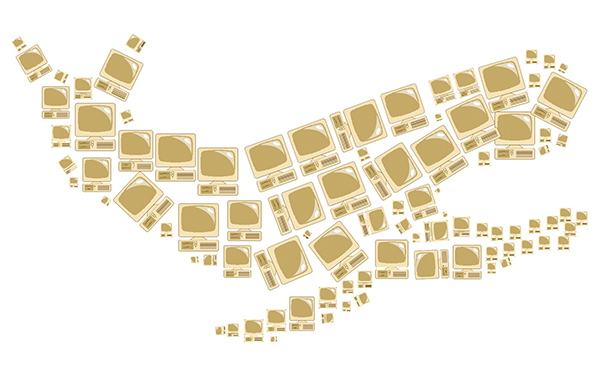Insurance Technology Diary
Episode 33: Fish, and chips off the old block
Guillaume Bonnissent’s Insurance Technology Diary

I imagine the whale had a happy but loud and scary kind of voice:
“Come right, here little fish.
I’m peckish. You’re small, but you’ll do for a dish.
I’ve come a long way. I need food in my tummy.
A dinner of shark sounds delicious and scrummy!”
This part of The Shark in the Dark made my son viscerally cheerful each time we read the story together when he was little. The squid, cast as the unlikely antihero, gathered together all the little fish into one big shark-shaped mass to frighten off the evil, marauding shark.
Alongside the entertainment, mon fils was being taught a practical life lesson:
“You see,” said the squid, “When we all got together
We taught him a thing he’ll remember forever!”
I was reminded of this book and its painful rhyming scheme at a recent insurTech conference. I noticed that one of the exhibitors’ displays included the logos of multiple “partners.” At least half of those companies were also exhibiting at the same event, and together the firms comprised perhaps a third of the exhibitors in total. This, I thought, was a physical manifestation of the vaunted ‘insurance ecosystem’ we hear so much about.
Rarely are these networks seen so tangibly, but I have no doubt about their practicality. A collection of small companies can often be more powerful than a giant. A classic example is the global broker network. Local brokers can adequately serve multinational clients with the support of an international club of affiliated, independent, and like-minded commercial brethren. For any local broker outside the top global dozen or so, it’s probably the only way for them even to get an appointment with any global corporations resident on their patch.
Insurance-sector supplier ecosystems can be powerful as well. Companies that provide services to MGAs, for example, can benefit from affiliations with others that provide non-overlapping services to similar customers. Clients benefit too, because they know their supply partners are comfortable working with each other. Such is the nature of an ecosystem.
But there’s another side to the ecosystem story. An insurance ecosystem can be limiting by preventing new blood from joining the club. It can entrench routines that become embedded and inflexible.
I have written here before, for example, how a broker’s proprietary electronic placement platform can create an extraordinary constraint on possibilities. By definition, it permits only those using the system to sign up to any deal in the first instance. Clients’ risks are presented to the same old markets, insurers see the same, bland old stream of risks, and everyone is held back from experiencing something different and potentially diversifying, revitalising, or maybe even profitable.
In our era of powerful insurance ecosystems, successful insurance organisations must be able to operate within multiple networks of differentiated companies across many ecosystems, instead of being stuck with a fixed set of trading partners.
To achieve that, the relevant IT platforms they have deployed must be versatile, and able to accommodate multiple partner-group linkages. Each must refer back to a central, infallible Corporate Data Treasury which provides a single source of truth. This warehouse must be supported by any process or function in which the user is involved, anywhere in any of the ecosystems. Its data standards must be useful to any and all sending and recipient systems.
It’s a tall order. But…
If you’re to enjoy a wee something to munch
Work together with IT that keeps sharks from your lunch.
